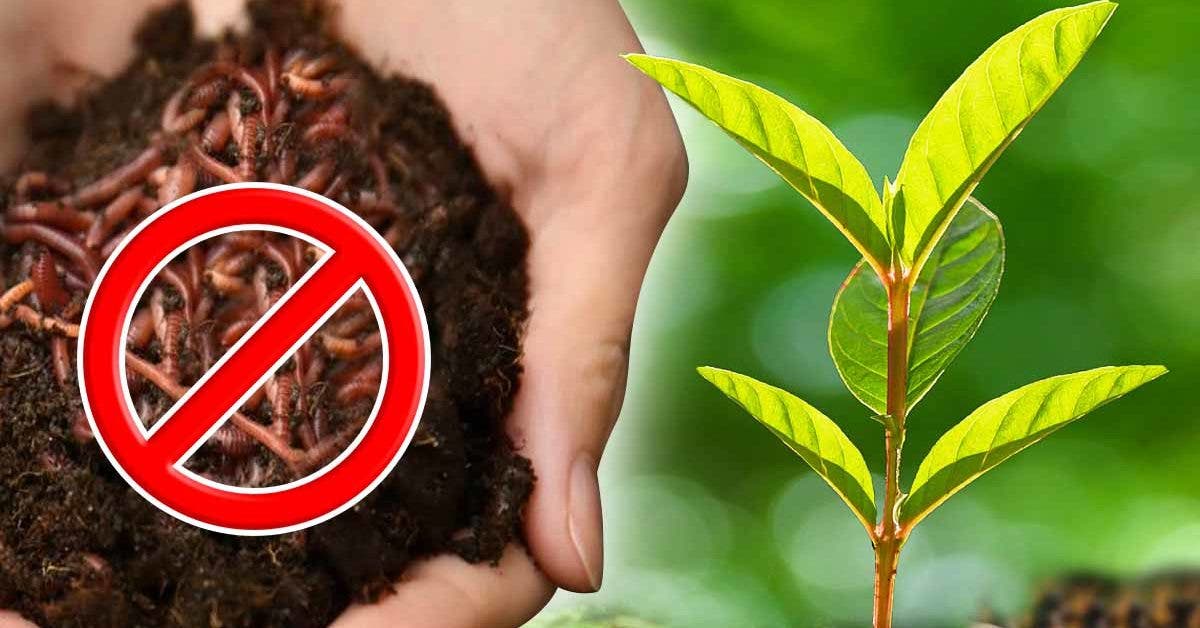Anorexia, bulimia: how to manage these disorders?
For most of us, eating is a pleasure, a moment of sharing and conviviality, a way of taking care of our health. But, for some, it can quickly become hell. These suffer from eating disorders (TCA), the only way for them to express deep suffering. The best known are anorexia nervosa and bulimia.
Anorexia nervosa is characterized by excessive control of weight, body image and diet. It is accompanied by significant weight loss, with a body mass index (BMI) below 18 and most often amenorrhea, i.e. that is, an absence of rules. There are two types of anorexia nervosa. Anorexia is restrictive when there is food deprivation and absence of compulsive seizures and vomiting. Anorexia is bulimic when there are compulsive crises, compensated by vomiting.
The link between anorexia and bulimia is therefore tenuous. Bulimia, on the other hand, is characterized by compulsive food crises, which occur at least twice a week and which are followed by vomiting and compensatory behaviors, such as skipping meals, fasting for a few days or even excessive physical activity. This type of compensatory behavior can also exist in the anorexic. Nothing surprising in this, because people who suffer from anorexia nervosa or bulimia are driven by the same thought: above all not to get fat. An immeasurable fear that dictates their behavior… This is also what distinguishes bulimia from compulsive eating or binge eating, other eating disorders, where the thought of “not getting fat” does not exist.
Two ways to handle it
Refusing to eat – Source: spm
The fear of getting fat is the visible part of all the anxieties that the anorexic or bulimic person can feel, consciously or unconsciously. Each person is unique, with their own history, family background and social environment. The causes of these fears and anxieties are therefore as varied as there are people. We will probably find there the fear of losing oneself, of not finding one’s place, of not being able to face life, of not responding to the dictates of society, of not being up to it, of not not satisfying family expectations…
Let us remember that the anorexic tries to tame and master them by setting up a system of absolute control over his diet and his body. This mastery gives him an impression of omnipotence, removing from his thoughts all the consequences and risks that his behavior imposes on his health. We often have a hyperactive person, dynamic, positive and convinced of having the right behavior. So she doesn’t feel guilty. The bulimic person, she tries to control her fears, but slips and loses control. The excess of food allows him for a time to suffocate, silence or disappear his anxieties. She will quickly be overtaken by guilt and will be more likely to be depressed, desperately struggling to try to regain control.
So, although the eating disorder is always mentioned in First, anorexia nervosa and bulimia are above all profound psycho-emotional disorders. The health risks are real: osteoporosis, malnutrition and all its consequences. As for affective and emotional, family, social and professional lives, they are almost non-existent, the anorexic or bulimic person locking himself in his bubble.
Getting out of your bubble
So how can you help someone who suffers from anorexia or bulimia? The key is above all to listen to this call for help and this deep malaise. All health professionals have their role to play: doctors, psychiatrists, psychologists, nutritionists, dieticians and naturopaths. The accompaniment can only be multidisciplinary and naturopathy will come in reinforcement, bringing in particular its holistic vision of being. Accompanying a person suffering from anorexia or bulimia is to reconcile body, mind and soul. It’s reconnecting with the body, at a time when it is uninhabited, disembodied and often hated because it does not obey orders. This unloved is our best ally, readjusting and compensating for all our mistakes, fighting to keep us alive. Thus, before even talking about nutrition and deficiencies, it is necessary to soothe anxieties and stress, release emotions and reinhabit the body.
” alt=”Le stress au travail” width=”730″ height=”475″ aria-describedby=”caption-attachment-342043″ data-sizes=”(max-width: 730px) 100vw, 730px” data-src=”https://www.santeplusmag.com/wp-content/uploads/Le-stress-au-travail.jpg” data-srcset=”https://www.santeplusmag.com/wp-content/uploads/Le-stress-au-travail.jpg 730w, https://www.santeplusmag.com/wp-content/uploads/Le-stress-au-travail-300×195.jpg 300w” />Soothing anxiety and stress
” alt=”Le stress au travail” width=”730″ height=”475″ aria-describedby=”caption-attachment-342043″ data-sizes=”(max-width: 730px) 100vw, 730px” data-src=”https://www.santeplusmag.com/wp-content/uploads/Le-stress-au-travail.jpg” data-srcset=”https://www.santeplusmag.com/wp-content/uploads/Le-stress-au-travail.jpg 730w, https://www.santeplusmag.com/wp-content/uploads/Le-stress-au-travail-300×195.jpg 300w” />
” alt=”Le stress au travail” width=”730″ height=”475″ aria-describedby=”caption-attachment-342043″ data-sizes=”(max-width: 730px) 100vw, 730px” data-src=”https://www.santeplusmag.com/wp-content/uploads/Le-stress-au-travail.jpg” data-srcset=”https://www.santeplusmag.com/wp-content/uploads/Le-stress-au-travail.jpg 730w, https://www.santeplusmag.com/wp-content/uploads/Le-stress-au-travail-300×195.jpg 300w” />
” alt=”Refuser de manger” width=”730″ height=”526″ aria-describedby=”caption-attachment-342042″ data-sizes=”(max-width: 730px) 100vw, 730px” data-src=”https://www.santeplusmag.com/wp-content/uploads/Refuser-de-manger.jpg” data-srcset=”https://www.santeplusmag.com/wp-content/uploads/Refuser-de-manger.jpg 730w, https://www.santeplusmag.com/wp-content/uploads/Refuser-de-manger-300×216.jpg 300w” />
Stress at work – Source: spm
Anxiety and stress are both a cause and a consequence of anorexia and bulimia. Plants that calm, relax, de-stress and help to see “la vie en rose” can therefore help the person in pain on the road to healing.
Let’s start with passionflower ( Passiflora incarnata) which calms anxiety, by stimulating the secretion of serotonin, the relaxation hormone, and the receptors for GABA (gamma-amino butyric acid), an inhibitory neurotransmitter of the nervous system which is involved in the control of anxiety . It also prepares for falling asleep and better sleep. It can be taken over a long period, as an infusion (15 grams of dry leaves per cup), in capsules or in ampoules, two to three times a day depending on the needs, but there may be an interaction with hypnotic or anxiolytic drugs.
In case of depression, certain “natural antidepressants” can be used, such as St. John’s wort (Hypericum perforatum) . Many studies have demonstrated the activity of its active ingredients on serotonin, adrenaline, dopamine or GABA receptors, all neurotransmitters involved in regulating our mood. In fact, St. John’s Wort is as effective as drug antidepressants, but with no side effects! It is taken in capsules or vials, two to three times a day, depending on the manufacturer’s recommendations. As it can interact with many medications, including antidepressants, it should not be used without professional advice. It is also contraindicated in young children, pregnant and breastfeeding women and people suffering from bipolar disorders.
On mild to moderate depression, we can still think of saffron (Crocus sativus) whose effectiveness has also been demonstrated by numerous studies. At the dosage of 30 mg per day, it is as effective as conventional antidepressants. But it remains contraindicated in pregnant and breastfeeding women, as well as with antidepressants.
Release emotions
Emotions are the messengers of our inner state. If they are not made aware and then expressed, an imbalance develops between body, mind and soul. Malaise and sometimes illness then appear. However, plants have a subtle link with our emotions, as evidenced by Bach Flowers.
Here are some plants to use alone or in synergy to release your emotions:
Wild garlic: fights fear, worry , a deep feeling of insecurity
- Gold button : fight against devaluation, poor self-esteem
- Comfrey: helps with body awareness when you have the feeling of being cut off from your physical body
- Fig Tree: brings confidence and openness to others when you need to control everything
Fuchsia: help with co understanding of buried emotions, to emotional release
Helianthemum: gives courage, support to overcome fears and loss of self-control
- Jasmine: physical and psychic purification, self-acceptance when one has a negative image of it
- Onion : promotes letting go
- Orange tree: participates in the emotional release, in the joy of living
- Wild apple tree: purifies and helps us to accept ourselves
- Prunus: restores peace of soul in case of fears o bsessionals
- Scots Pine:
treats excessive guilt, feeling of worthlessness
Each personality has its flower(s). They should be taken between meals, three to four times a day as long as necessary.
Make up for deficiencies
At this level, we can advise taking vitamin D3, combined with vitamin K2 to reduce demineralization and bone loss. Also consider omega-3 capsules, essential for hormonal balance, anti-inflammatories, immune and mood regulators. Without forgetting a complex of multivitamins and minerals, combining vitamins A, B and C, as well as zinc, magnesium and calcium.
On the plant side, the infusion nettle leaves (Urtica dioica) is a good way to fill the gaps and rebuild. Very rich in minerals, trace elements and vitamins, it is taken at the rate of 15 grams of dry leaves for one liter of water, to drink along the day, ten days a month.
Plants on a case-by-case basis
In addition to all the plants already mentioned, some will be better able to support anorexic disorder or bulimic disorder.
Thus, the person anorexic who expresses the desire to find the appetite can turn to fenugreek (Trigonella foenumgraecum). This plant does not give an ogre appetite, but it helps to revive the activity of a digestive system that has been at rest for too long. Appetite is improved and digestion is easier, without heaviness, which allows you to reconnect with the pleasure of eating. The usual dosage is 250 milligrams, in capsules, two to three times a day, before meals, as a three-week cure, renewable after a week’s break.
If this is not enough, the yellow gentian (Gentiana lutea), a bitter plant, will stimulate the secretion of digestive enzymes and the appetite. Take 5 drops of a mother tincture in water 18 minutes before meals.
At the Conversely, in the case of bulimia, the objective will be to calm food cravings. For this, nothing better than griffonia (Griffonia simplicifolia). Rich in 5-HTP, a precursor of serotonin, it acts on snacking and food compulsions at the end of the day, especially when there are sweet cravings, and helps reduce feelings of hunger. The usual dosage is 195 milligrams in the late morning and mid-afternoon. Griffonia is contraindicated for women in pregnant or breastfeeding and in the event of treatments modulating serotonin levels including antidepressants.
Finally, gymnema leaves (Gymnema sylvestris) inhibit the taste buds sensitive to the sweet flavor, without affecting the other flavors. In case of irrepressible craving for sugar, open the contents of two capsules directly on the tongue. What you put in your mouth will be much less pleasant and it will help you stop the crisis. The plant also helps regulate blood sugar, promoting weight loss and limiting cravings related to reactive hypoglycemia. As a basic cure, take 216 milligrams of dry plant in capsules, three times a day, 30 minutes before meals. Gymnema is contraindicated in pregnant or breastfeeding women and can interact with hypoglycemic and hypolipidemic drugs.
As for dietary advice, they will come in due time, at the time that seems most appropriate to the naturopath. Then we can talk about living food, the one that heals us and accompanies us on the path to vitality.
Plant /ProductIndications
Forms and dosages
Passiflora
Anxiolytic
In infusion (15 g per cup), in capsule or ampoule, 3 times a day, according to the dosage of the manufacturer
St. John’s Wort
Antidepressant
In capsule or in ampoule , 2 to 3 times a day, according to the manufacturer’s dosage
Saffron
Antidepressant
30 mg per day
Ashwagandha
Adaptogen, relaxant30 mg of dried roots in capsule 3 f ois per dayRhodiola
Adaptogen, anxiolytic
200 mg in the morning in capsule
Bigarade petitgrain (he)Relaxing
A few drops in a massage oil
Green mandarin (he)Relaxing
A few drops in a massage oil
Fine lavender (he)
RelaxingA few drops in a massage oil
Nettle (leaves)Remineralizing
Brew (10 g for one liter of water) in cure of 15 days per monthFenugreekDigestive and appetite stimulant
300 mg in capsule 3 times a day for 21 daysYellow gentiandigestive stimulant5 drops of mother tincture 15 mins before mealsGriffonia
Antidepressant and anti-compulsion to eat
200 mg in capsules morning and afternoon
Gymnema sylvestris
Anti-sugar
250 mg in capsules 3 times a day, 30 min before meals + 2 directly on the language in case of crisis
Please note, the dosages indicated are given as an indication and must be adapted according to the weight and age of the person nne.
Two shots extra inch
The action of these plants can be supplemented by an adaptogenic plant, such as ashwagandha (Withania somnifera), which helps the body and the mind to better adapt to the stressful situations, whether physical or psychological. It supports the thyroid and the adrenal glands, often affected in case of TCA, both by nutritional deficiencies and by psycho-emotional disorders. Ashwagandha also has a calming and relaxing action and combines perfectly with passionflower to fight against anxiety. Finally, it brings energy and supports vitality. The usual dosage is 195 milligrams, three times a day, in capsules. Note that it can interact with anxiolytics and antidepressants and that it is not recommended for pregnant and breastfeeding women, in case of hemochromatosis and hyperthyroidism.
Another plant adaptogen will be interesting in case of bulimia, it is rhodiola (Rhodiola rosea). Both antidepressant and anxiolytic, it helps to better control food urges. It also brings a boost of energy and will be taken in the morning, in capsules, at the rate of 220 milligrams. Rhodiola is contraindicated in pregnant and breastfeeding women, in bipolar people and in case of taking antidepressants.
3 techniques to reinhabit your body
Through relaxation and letting go that it provides, the massage allows you to regain awareness of your body, to circulate energy and to unblock internalized emotions. If the approach to the body is difficult at first, why not start with a massage of the hands or feet, head and face or arms? This allows you to reconcile with touch and gradually establish a relationship of trust. To bring even more relaxation, essential oils can be added to the massage oil, such as bitter orange petit grain (Citrus aurantium), green mandarin (Citrus reticulata) or fine lavender (Lavandula officinalis).The most effective tool to restore the link between the body and the spirit and to put the conscience in the present moment is the breath. Our breath is permanent and animates our body without our being aware of it. By focusing our attention on the breath, we place our consciousness back in the body and give space to everything that defines us: the mind and its thoughts, the emotions and the physical body. The ideal is to practice daily ten minutes of mindfulness meditation. Heart coherence is another breath-based technique. It promotes the return to balance between the sympathetic nervous systems (that of action and stress) and parasympathetic (that of relaxation). It therefore provides peace and calm. It only takes 5 minutes two to three times a day.
- Gentle physical activity gets the body moving and helps regulate stress and emotions. It should of course be a source of pleasure. Outdoor walking, for example, is ideal.
20730Read also20526 People with anxiety disorders hide these 5 qualities




